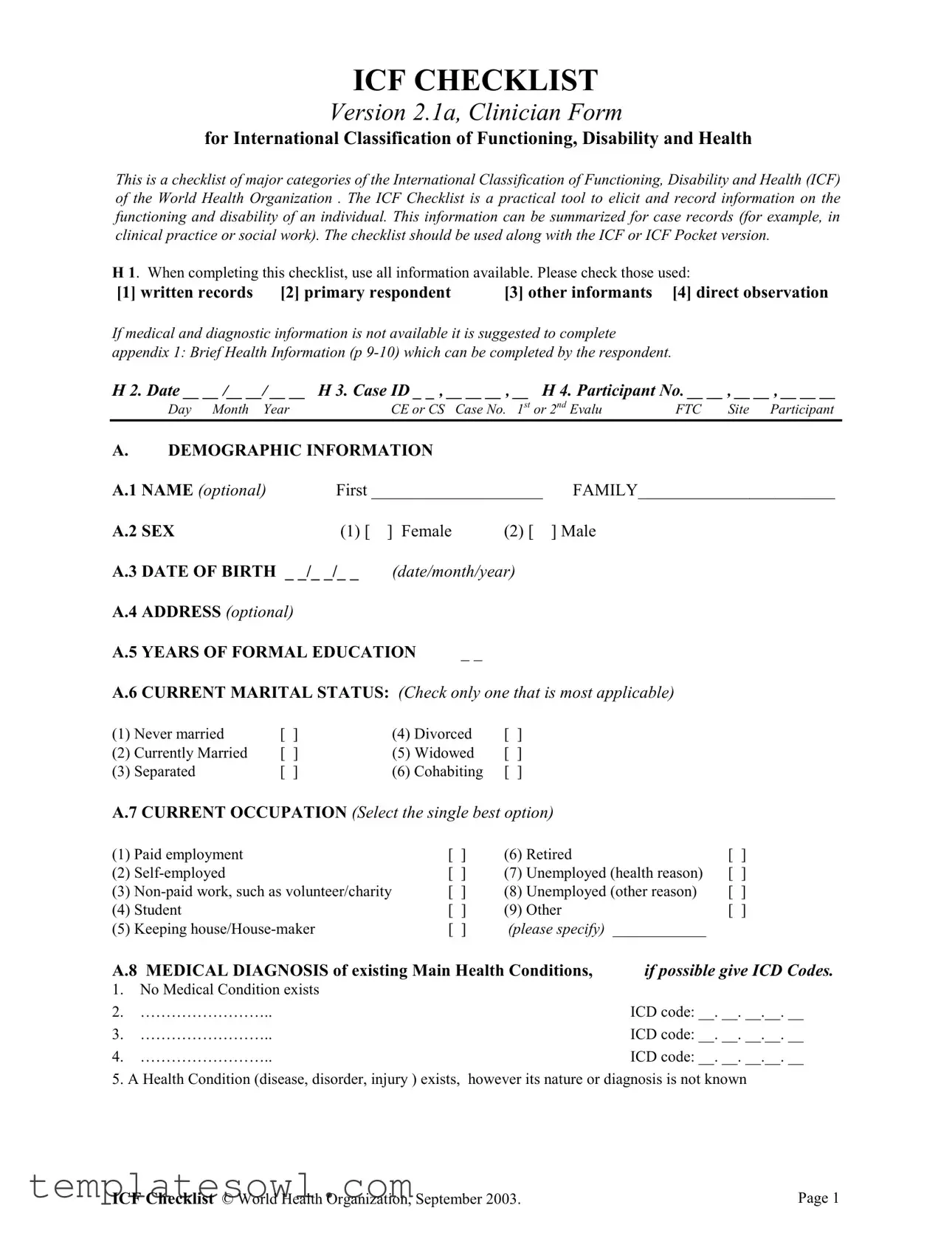1. What is the purpose of the ICF Checklist form?
The ICF Checklist form is designed to gather and log information about an individual's functioning and disability. It serves as a practical tool for clinicians and social workers to summarize findings in case records, aiding in better understanding and documentation of an individual's health condition.
2. How should the ICF Checklist be used?
The checklist should be used in conjunction with the ICF or ICF Pocket version. When completing it, all available information should be utilized. This includes written records, the primary respondent's insight, input from other informants, and direct observation of the individual. Additionally, filling out the Brief Health Information section is recommended if medical data is lacking.
3. What kind of information does the ICF Checklist capture?
The checklist captures demographic data, details about the individual’s medical conditions, and assessments of impairments in body functions and structures. It includes various qualifiers to measure the extent and nature of these impairments, ensuring a comprehensive overview of the individual’s health status.
4. What are the categories of impairments included in the form?
The ICF Checklist addresses impairments in body functions such as mental, sensory, voice, and speech functions, as well as cardiovascular, digestive, and musculoskeletal functions. Furthermore, it measures impairments in body structures ranging from the nervous system to the sensory organs. Each impairment is categorized with qualifiers that help assess severity.
5. How are impairments rated in the ICF Checklist?
Impairments are rated using a scale from 0 to 4. A rating of 0 indicates no impairment, while a rating of 4 signifies complete impairment impacting daily life significantly. The checklist also includes qualifiers for more detailed assessment, allowing for nuanced understanding of an individual’s condition.
6. Is it mandatory to fill out every section of the ICF Checklist?
While it is strongly encouraged to provide comprehensive information in the ICF Checklist, certain sections, such as name and address, are optional. Focus should be given to sections that aid in capturing the individual's health status accurately.
7. Who can assist in filling out the ICF Checklist?
Healthcare providers, social workers, and the individuals themselves can collaboratively fill out the ICF Checklist. Input from other informants, like family members or caregivers, is also valuable. The goal is to collect diverse perspectives to ensure accuracy and completeness.
8. Can the ICF Checklist be used in different settings?
Yes, the ICF Checklist is versatile and can be utilized across various settings, including clinical practice, rehabilitation centers, and social services. It is suitable for use with individuals of all ages and conditions, making it a valuable tool for a wide range of professionals.
9. What should I do if I encounter difficulties while completing the form?
If difficulties arise while completing the ICF Checklist, it is advisable to consult a supervisor or a healthcare professional familiar with the ICF framework. Guidance can also be sought from existing training materials or workshops focused on implementing the ICF methodology effectively.





